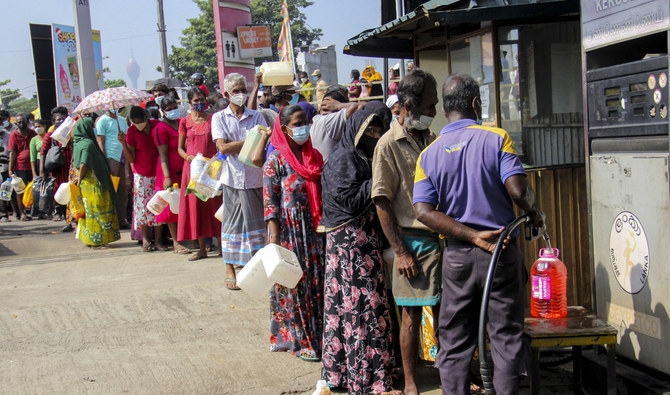The Sri Lankan government on Thursday announced a new scheme to halt a sharp rise in food prices as the country struggles with soaring inflation and depleted foreign reserves.
Sri Lanka’s inflation hit a record 11.1 percent in November, due mostly to the fact that its tourismdependent economy has been wrecked by international COVID-19 travel restrictions. The country’s foreign reserves stand at just $1.58 billion, down from $7.5 billion when President Gotabaya Rajapaksa took office in 2019.
To shore up its currency reserves, the government imposed import bans and hiked fuel prices earlier this week, prompting shortages and skyrocketing prices of essential goods.
The prices of many foods and medicines have risen almost 20 percent in the past year, with some increasing by even more.
“We are adopting a new scheme to (prevent) consumers from paying black market prices for in-demand goods,” Trade Minister Bandula Gunawardena told reporters on Thursday.
“The government has imported rice to meet the shortage and it is now being sold at Rs140 ($0.70) per kilo in all outlets, against the market price pf Rs240 per kilo. Traders should cooperate with the government to relieve the difficulties of the common man.”
Retailers, however, say they have little choice but to raise their prices, as the rise in fuel costs has disrupted supply chains. Vegetable sellers in Colombo complain that 75 percent of produce has not reached the capital city’s markets, as delivery from nearby villages has nearly come to a halt.
Afras Shahulhameed, a salesman at GACA pharmacy in Colombo, told Arab News the store could not do anything to halt the rise in prices.
“We are helpless, since the revised price list has come from the respective suppliers,” he said. Shahulhameed cited the rise in price of a pack of Valsartan — a popular drug used to treat high blood pressure — from Rs2,000 earlier this year to Rs2,500 as an example.
Gamini Leslie Peiris, who drives a three-wheel taxi in Colombo, told Arab News that the minimum price of a journey has increased 50 percent this week alone. “The log-in fare of the taxi meter has risen from 1$ to $1.5 after the fuel hike,” he said.

